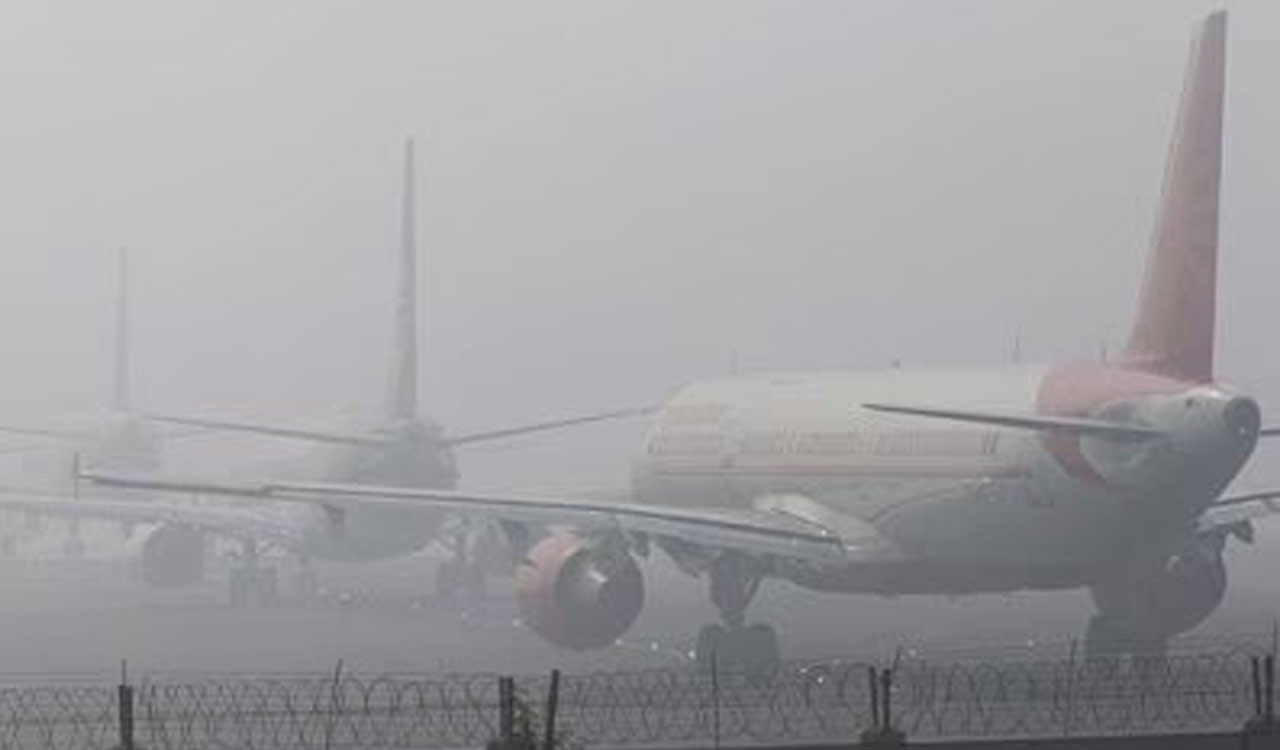 |
|
The dense fog and severe air pollution blanketing Delhi on November 18th, 2024, caused widespread disruption to air travel, significantly impacting flight operations, particularly those connecting to Hyderabad. Over 370 flights experienced delays at the Indira Gandhi International Airport, with at least 22 flights between Hyderabad and Delhi facing delays of up to two hours. This resulted in considerable inconvenience for numerous passengers who experienced disrupted travel plans and extended waiting times. The impact was felt across several major airlines, with IndiGo and Air India reporting multiple delays and schedule adjustments.
The Delhi International Airport Limited (DIAL), responsible for managing the airport, issued a statement via Twitter acknowledging the situation and advising passengers to contact their respective airlines for updated flight information. The low visibility conditions necessitated the implementation of low visibility procedures, which further hampered flight operations. The statement highlighted the ongoing challenges and the potential for continued flight disruptions throughout the day. The scale of the disruption underscores the significant impact of adverse weather conditions and air pollution on the efficiency and reliability of air travel.
The delays caused by the poor weather conditions extended beyond just the immediate inconvenience for passengers. Airlines faced significant operational challenges, including rescheduling flights, managing passenger accommodations, and dealing with potential compensation claims. The economic impact on the airlines, potentially including lost revenue and increased operational costs, is likely substantial. The incident also raises questions regarding the preparedness of airports and airlines to handle such weather-related disruptions and the need for better contingency plans to minimize the impact on passengers and the wider aviation sector. The ripple effect extended beyond Delhi, with connected flights across the country experiencing knock-on delays.
The severity of the air pollution in Delhi, a recurring problem, played a crucial role in the magnitude of the disruption. The combination of fog and high levels of pollutants reduced visibility significantly, making it unsafe for aircraft to operate under normal procedures. This highlights the complex interplay between environmental factors and the operational efficiency of transportation networks. The incident underscores the need for sustained efforts to address air pollution in major metropolitan areas, not only for public health reasons but also to improve the reliability and efficiency of essential services such as air travel.
Looking forward, improving the resilience of air travel networks to adverse weather and air pollution requires a multi-pronged approach. This includes investments in advanced weather forecasting technology to provide more accurate and timely predictions, allowing airlines and airports to proactively adjust schedules and manage passenger expectations. Further improvements in air traffic management systems could also help optimize flight operations during periods of low visibility. Furthermore, sustained efforts to reduce air pollution levels in major cities are crucial to minimize the frequency and severity of such disruptions. The incident serves as a reminder of the interconnectedness of environmental factors, public health, and the efficient functioning of critical infrastructure systems.
Source: Hyderabad fights hit as dense fog, pollution delay over 370 flights at Delhi airport
